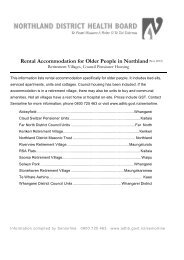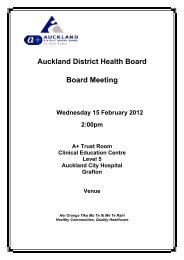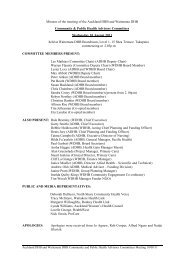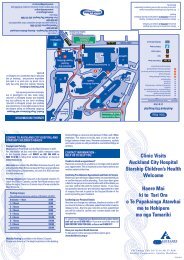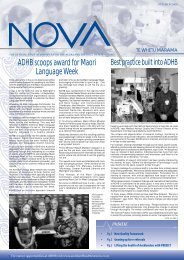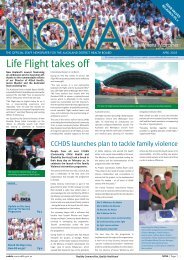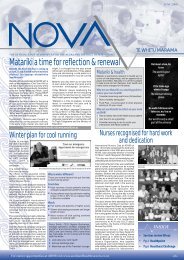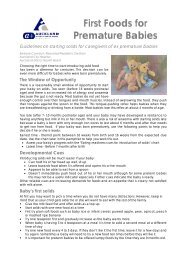EvitaXL
EvitaXL
EvitaXL
Create successful ePaper yourself
Turn your PDF publications into a flip-book with our unique Google optimized e-Paper software.
Ventilation Modes<br />
MMV<br />
MMV<br />
Mandatory Minute Volume Ventilation<br />
In contrast to SIMV, the MMV ventilation mode gives mandatory<br />
ventilation only if spontaneous breathing is not yet sufficient<br />
and has fallen below a pre-selected minimum ventilation.<br />
This minimum ventilation is controlled by the two set values<br />
tidal volume VT and frequency f, and results from the<br />
product VT x f.<br />
Unlike SIMV, the mandatory strokes are not given regularly but<br />
only in cases of insufficient ventilation.<br />
The frequency of mandatory strokes is determined by the level<br />
of spontaneous breathing:<br />
if spontaneous breathing is sufficient, mandatory strokes are<br />
not used. If spontaneous breathing is not sufficient, intermittent<br />
mandatory strokes of the set tidal volume VT are applied.<br />
If there is no spontaneous breathing at all, the mandatory<br />
strokes are applied at the set frequency f.<br />
<strong>EvitaXL</strong> continuously balances the difference between spontaneous<br />
breathing and the set minimum ventilation. As soon as<br />
the balance becomes negative, because spontaneous breathing<br />
is no longer sufficient, <strong>EvitaXL</strong> applies a mandatory ventilation<br />
stroke at the set tidal volume VT, so that the balance is<br />
positive again.<br />
Experience shows patients breathe very irregularly.<br />
Phases of shallow breathing alternate with phases of tachypnoea<br />
and large respiratory effort. In order to allow for these<br />
individual fluctuations, the balancing process also takes<br />
account of the extent by which the set minimum ventilation has<br />
been exceeded.<br />
This value is progressively reduced to zero by <strong>EvitaXL</strong> within<br />
a maximum time of 7.5 seconds after apnoea.<br />
In this way, the response time of <strong>EvitaXL</strong> is automatically<br />
adapted to the preceding cycle of spontaneous breathing<br />
before activating mandatory ventilation:<br />
If this spontaneous breathing was close to the minimum ventilation,<br />
<strong>EvitaXL</strong> responds rapidly within the cycle time (1/f).<br />
However, if the patient's spontaneous breathing was much<br />
higher than the set minimum ventilation, <strong>EvitaXL</strong> tolerates a<br />
longer breathing pause. In extreme cases of sudden apnoea<br />
after a phase of heavy spontaneous breathing, the response<br />
time will be 7.5 seconds plus the trigger time, with a minimum<br />
of one cycle time (1/f).<br />
212 Instructions for Use <strong>EvitaXL</strong><br />
PAW<br />
Flow<br />
set<br />
MV<br />
MV<br />
Tinsp<br />
VT<br />
PEEP<br />
1<br />
f<br />
Insp. flow<br />
mandatory MV<br />
no spontaneous<br />
breathing<br />
Pmax<br />
(configurable)<br />
ASB pressure<br />
support<br />
short<br />
rise time<br />
trigger phase<br />
beginning spontaneous<br />
breathing<br />
long<br />
rise time<br />
spontaneously<br />
breathed MV<br />
t<br />
sufficient spontaneous<br />
breathing<br />
t<br />
t<br />
011<br />
012



